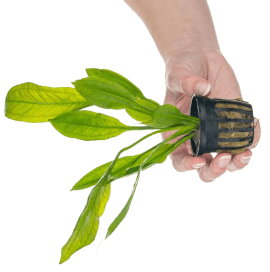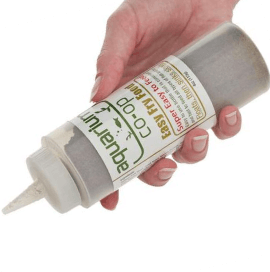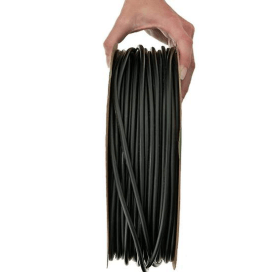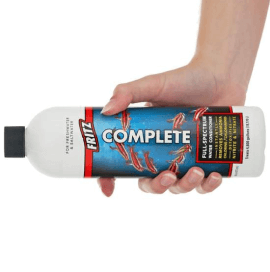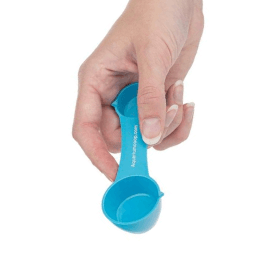How to Treat Ich or White Spot Disease on Freshwater Fish
Ich is one of the most common diseases that your aquarium fish can encounter. Many different approaches exist for combating this illness, but based on more than a decade of experience running 100 to 200 tanks in a fish store and importing wild-caught species, this is our go-to method for treating ich.
What is Ich?
Also known as ick or white spot disease, the Ichthyophthirius multifiliis protozoan is an external parasite that attaches to your fish’s fins, body, and gills by forming a tiny white capsule (usually less than 1 mm in diameter). After feeding off the fish and growing to maturity, it falls off the fish, encapsulates itself on the ground or other aquarium surface, and rapidly replicates itself. Once the replication is complete, the cyst breaks open and hundreds of new ich protozoa are released into the water, capable of swimming for two to three days until they locate a new host to attack. The earlier you catch and treat the ich, the better your fish’s chances of full recovery.

This microscopic view shows ich in its trophont stage, feeding under the skin of the fish.
Does My Fish Have Ich?
A fish with ich tends to look like it has tiny crystals on its body, like someone sprinkled salt on it. We tend to notice ich on the fins first since there’s less slime coat in those areas and it’s easier for the parasite to target. Other symptoms may include loss of appetite, rapid breathing, fish rubbing their bodies against surfaces, lethargy, and hiding behavior.
If your fish has ich that comes from an external parasite, you will see five spots today and then maybe 35 spots tomorrow. However, some fish get “stress ich” or stress spots, which evenly covers the entire body (not just the fins). If you see five spots today and the same number of spots tomorrow with no increase, this may be stress ich instead and will not necessarily respond to the same treatment regimen mentioned below.
As a rough analogy, ich is like chickenpox (which are spots caused by an infectious microbe), whereas stress ich is like stress acne (which are spots caused by hormones and are not contagious). The treatments for chickenpox versus stress acne are very different, and the same applies to ich versus stress ich. See our article on stress ich for more details.

Clown loaches are prone to ich, especially if the water temperature is not high enough for their liking.
Can Ich Affect Humans?
Thankfully, no. You will not be infected if you touch the aquarium water. However, make sure to thoroughly wash your hands and forearms so that you will not accidentally pass the disease to other aquariums. Also, do not share any equipment such as siphons and nets between fish tanks. If you must reuse aquarium tools, you can disinfect them with very hot tap water and chlorine and then allow the items to completely dry before reuse.
What is the Best Ich Treatment?
There are numerous techniques for treating ich, from gentle herbal solutions to very invasive ones, but after years of testing, Aquarium Solutions Ich-X is our medication of choice. It’s very effective and safe to use with any fish (even scaleless ones), shrimp, snails, and live plants.
- First, identify the disease and make sure it’s actually ich. Since stress ich and velvet also look very similar, it may be helpful to wait 24 hours and confirm the diagnosis.
- Dose Ich-X according to the instructions, which is 5 ml of medication per 10 gallons of aquarium water, and wait 24 hours. (Do not use half-strength dosage for sensitive fish because that concentration will not be strong enough to kill ich. After treating thousands of fish, we have never seen a problem with any species.)
- Change one-third of the water and dose the aquarium again at the same concentration of 5 ml of Ich-X per 10 gallons of water. Remember to add enough medication to treat the total water volume of the aquarium, not just the volume of the water removed.
- Repeat Step 3 every 24 hours until you don’t see any signs of ich.
- Complete Step 3 for one extra day after you last see ich on your fish, just in case there any cysts hiding in the ground. (The only time the medication can kill the protozoa is when they’re free-swimming and not protected within a cyst.)
- Leave the medication in the water and gradually remove it over time with your regular water change routine.
- After treatment, the fish’s body has lots of wounds and tissue damage, making it an ideal environment for bacterial and fungal pathogens, so you may need to treat for secondary infections.

The active ingredient in Ich-X is malachite green chloride, which has a strong blue coloration, so avoid touching the liquid if at all possible. In our experience, we have not noticed any problems with blue staining on aquarium decor or silicone.
If there’s no improvement after 5 days, the disease was mostly likely misdiagnosed, and you are not dealing with ich. Stop treating with Ich-X, gradually remove it using your normal water change schedule, and reevaluate the diagnosis.
Also, if Ich-X is not available in your country, salt is another good method for treating ich. We often use it with cichlids (both African and South American) and goldfish, but catfish and loach species can be more sensitive to salinity changes. For more details on using salt to treat ich, read our blog post on aquarium salt.
Is Ich Always Present in Aquariums?
This is a hotly debated question among fish keepers, but regardless of the answer, the key is to always run your aquariums as if it is there. The disease is opportunistic and commonly appears when fish are weak or stressed, so try to identify why your fish got ich in the first place. Did you introduce new fish to your aquarium without quarantining them first? Was the fish tank poorly maintained, or were there rapid changes in parameters such as pH and temperature? By keeping the water quality high and minimizing sources of stress, you can easily avoid any future outbreaks of ich.
Fortunately, ich is one of the easiest diseases to treat, and fish generally will not die immediately from it (unless they already have a compromised immune system). Always keep a bottle of Ich-X on hand in case of emergencies because you don’t want to be forced to run to the store late at night and use a random product that may end up harming your fish. With the right medication and a bit of patience, your fish should be cleared up in no time from those pesky white spots.
